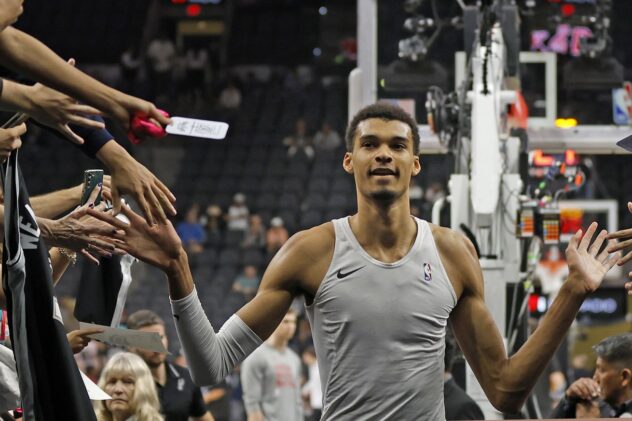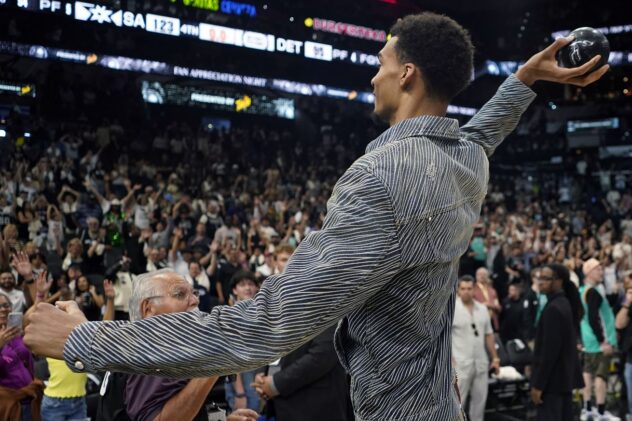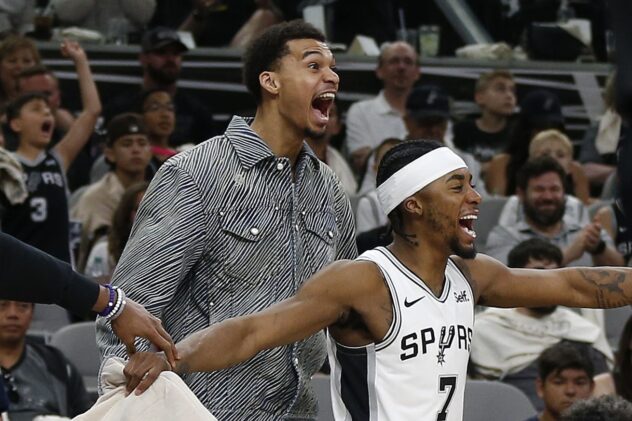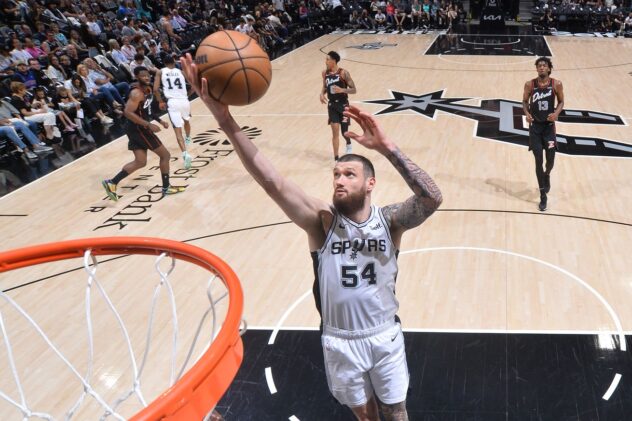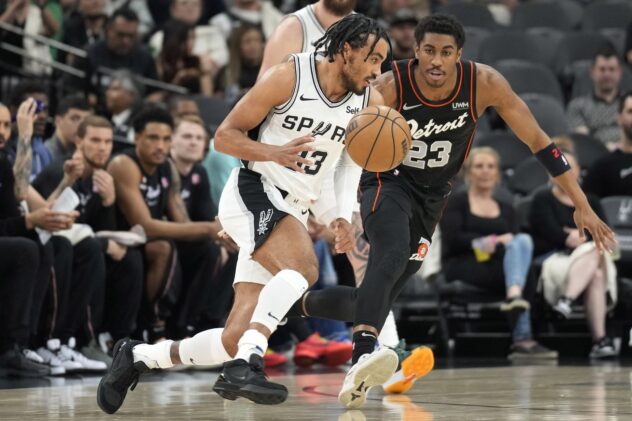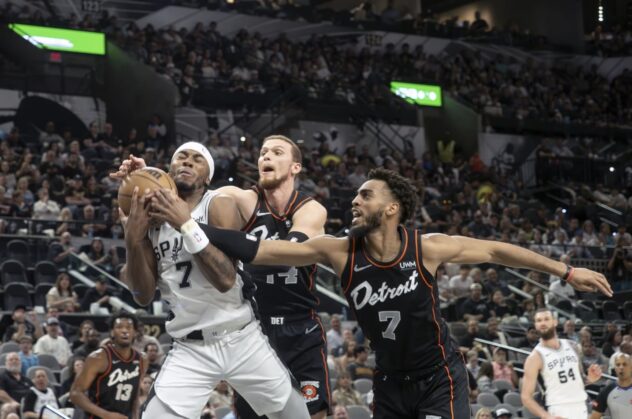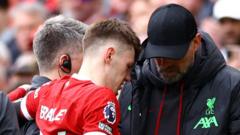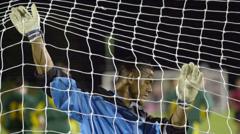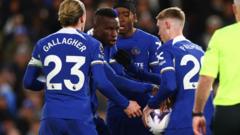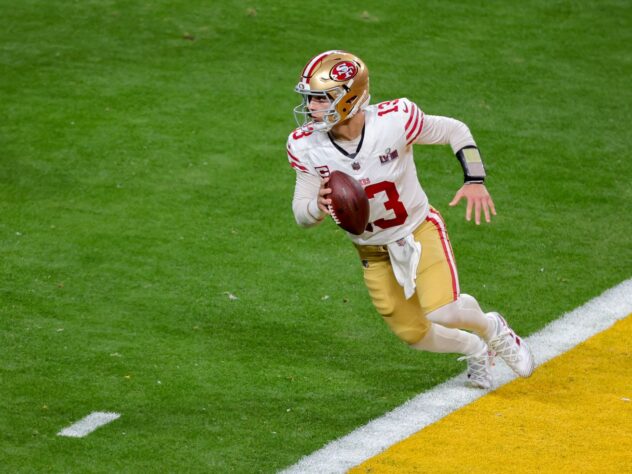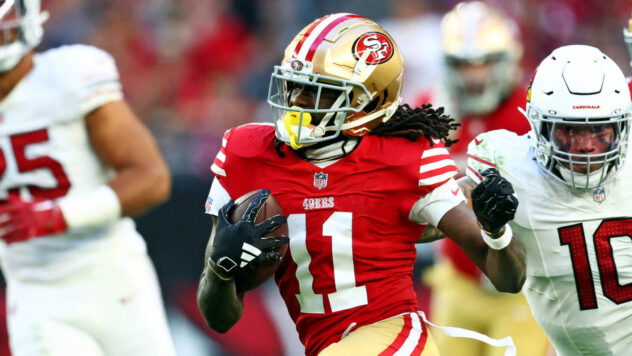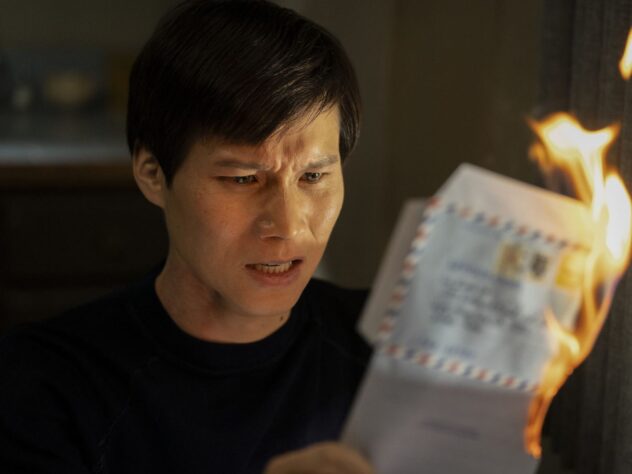The Spurs show effort to the very end
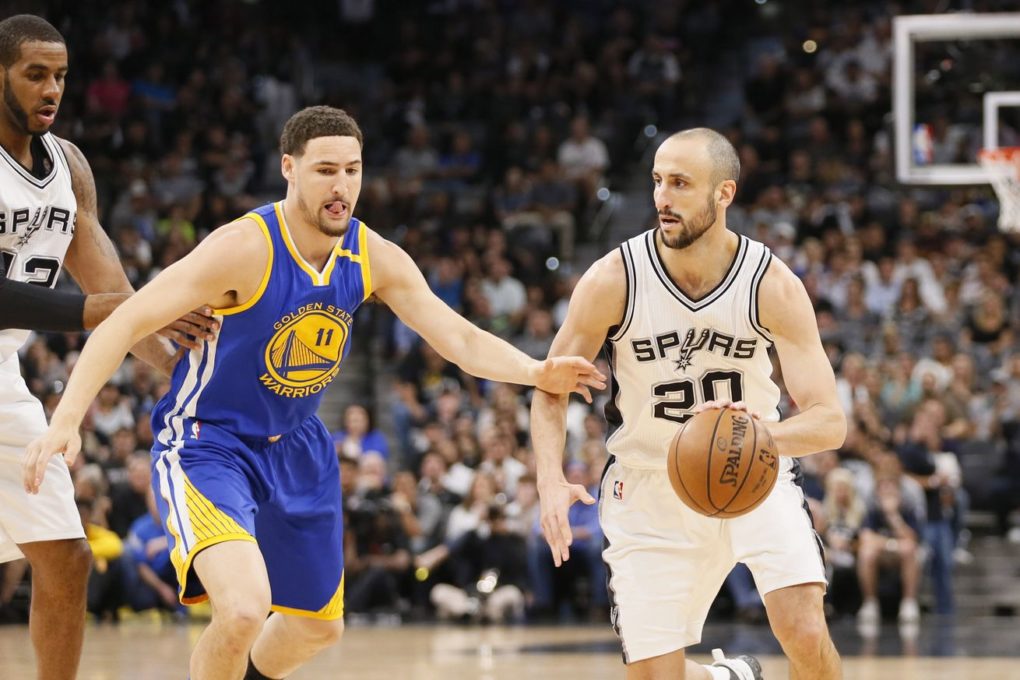
San Antonio couldn’t get the stops it needed to prolong the series, but all is not lost.
The Spurs’ Game 4 season-ending loss to the Warriors ended up being eerily similar to Game 3. Again, San Antonio rated favorably in three of the “Four Factors” that are usually predictive of winning basketball games. And, yet again, the Warriors’ shot-making proved to be way too much to handle. In the Study Hall following Game 3, I stressed that fans’ pride in this Spurs team should not rest on the outcomes of the individual games, or even the series as a whole. As has been pointed out many times, this series, for all intents and purposes, ended the moment Kawhi Leonard came down on Zaza Pachulia’s foot. Rather, Spurs fans need to appreciate the effort and competitive spirit displayed by this rag-tag group of rookies, role players and over-exerted veterans.
As was the case in Game 3, the Spurs did not beat themselves in this one. They protected the ball to an extraordinary degree, turning it over just eight times. During the regular season, the Warriors were the best team in the league at forcing turnovers, averaging 15.5 per game. The Spurs took care of the ball and eliminated a major source of Warriors buckets – points off turnovers – a category in which San Antonio dominated Golden State 22-to-4 in Game 4.
However, the Spurs’ fastidiousness with the ball did not stop Golden State from racking up a 10-point advantage in fast break points. All the Warriors need to start a fast break is a defensive rebound because they have the athletes and ball-handlers to push the ball and force mismatches from scrambling defenses. Kevin Durant, in particular, was deadly in transition, scoring 15 of his 29 points on fast breaks. Here, he gets the mismatch on LaMarcus Aldridge and uses his superior foot speed to get an easy shot at the rim.
The Spurs scored 106.4 points per 100 possessions in Game 4, a mark would have been league-average during the regular season. And while the Warriors’ length and athleticism forced the Spurs into a lot of tough shots, they got to the free throw line enough to produce a decent offense. Unfortunately, a “decent” offense cannot compete with the best offense since the 1986-87 Lakers. The Warriors’ combination of passing and cutting led to nearly one-third (30.2%) of their Game 4 shots being classified as “wide open” per NBA.com. During the regular season, just 19.6% of their shots were wide open.
In the play above, Durant rejects a high pick-and-roll, forcing the defense to collapse. Andre Iguodala is able to catch the kick-out and drive baseline, causing further defensive disarray. By the time the ball gets to Ian Clark at the top of the key, there’s no defender within 15 feet of him. The Warriors shot an eFG of 59.6% on wide open shots, which was actually a substantially worse percentage than that of the Spurs (70.8% eFG). However, San Antonio managed just 12 wide open attempts, or 12.4% of their shots.
For an attempt to be considered “wide open,” there must be at least six feet between the shooter and the closest defender. Since that’s such a large amount of space, it makes sense that most “wide open” shots come on three-pointers. That was the case on Monday night as the Warriors outscored the Spurs by 18 points from behind the arc. However, the more surprising part is just how much the Warriors dominated from closer to the basket.
The Spurs took a much larger percentage of their shots from two. However, despite taking 25 more two-pointers than Golden State, the Spurs still managed two fewer points from inside the arc, thanks to the Warriors’ 72.3% shooting from two. Just look at the shooting comparison chart below, per NBA.com:
/cdn0.vox-cdn.com/uploads/chorus_asset/file/8563977/Screen_Shot_2017_05_23_at_8.00.01_AM.png)
The Warriors outscored the Spurs by 10 points from the paint (non-restricted area), also known as “floater range.” If you can force a team to take a bunch of floaters, that’s usually indicative of good defense, but the Warriors refused to miss as Stephen Curry was a perfect 4-for-4 on his floaters.
Despite their inability to get stops, the Spurs still showed flashes of why this team projects to still be top-three in the league next season, if healthy, and assuming they bring back some of their impending free agents. Dejounte Murray managed seven assists and five steals, and overall just looked comfortable in the spotlight against arguably the best team in the league. Watch here as he takes it right into the body of this year’s presumed Defensive Player of the Year:
Also, Kyle Anderson finished with 20 points and four steals and actually looked like a capable NBA rotation player, despite all the criticism he received early in his career. Don’t be surprised if Gregg Popovich finds more minutes for the unorthodox swing man next year. Not to be left out, Bryn Forbes finished as the unlikely San Antonio leader in plus/minus by a wide margin, going +13 in 24 minutes. Finally, Manu Ginobili reminded us (as if we needed reminding) yet again just how delightful he is. There will be plenty of internet ink spilled over Ginobili’s career if he does decide to retire, but let it be said that he has remained the most fun player to watch, even as he approaches his 40th birthday.
Enjoy the offseason, everybody.
Spurs Shot Chart
/cdn0.vox-cdn.com/uploads/chorus_asset/file/8563213/Screen_Shot_2017_05_23_at_7.49.59_AM.png)
Warriors Shot Chart
/cdn0.vox-cdn.com/uploads/chorus_asset/file/8563205/Screen_Shot_2017_05_23_at_7.48.30_AM.png)
Four Factors
/cdn0.vox-cdn.com/uploads/chorus_asset/file/8563221/Screen_Shot_2017_05_23_at_7.52.14_AM.png)
Team Stats
/cdn0.vox-cdn.com/uploads/chorus_asset/file/8563225/Screen_Shot_2017_05_23_at_7.55.23_AM.png)
/cdn0.vox-cdn.com/uploads/chorus_asset/file/8563231/Screen_Shot_2017_05_23_at_7.56.28_AM.png)
Source: Pounding The Rock

